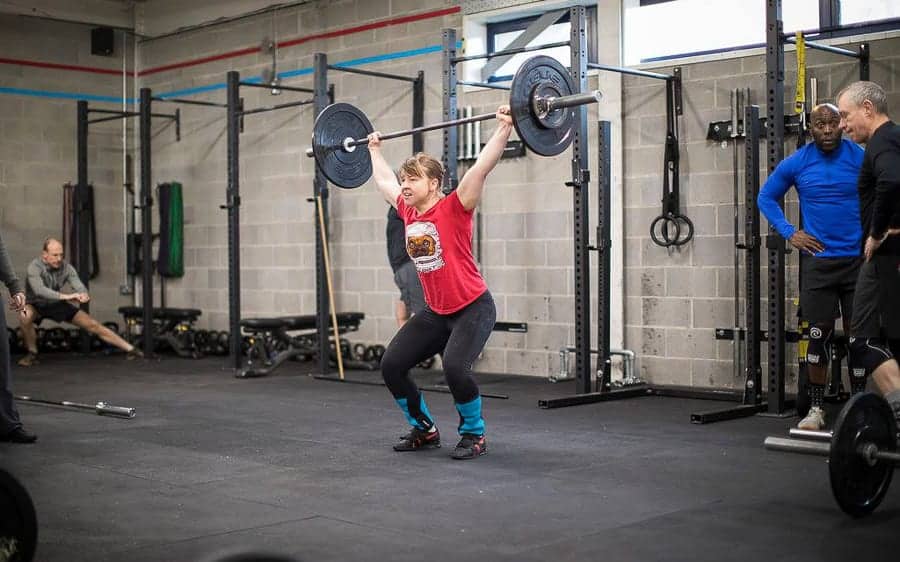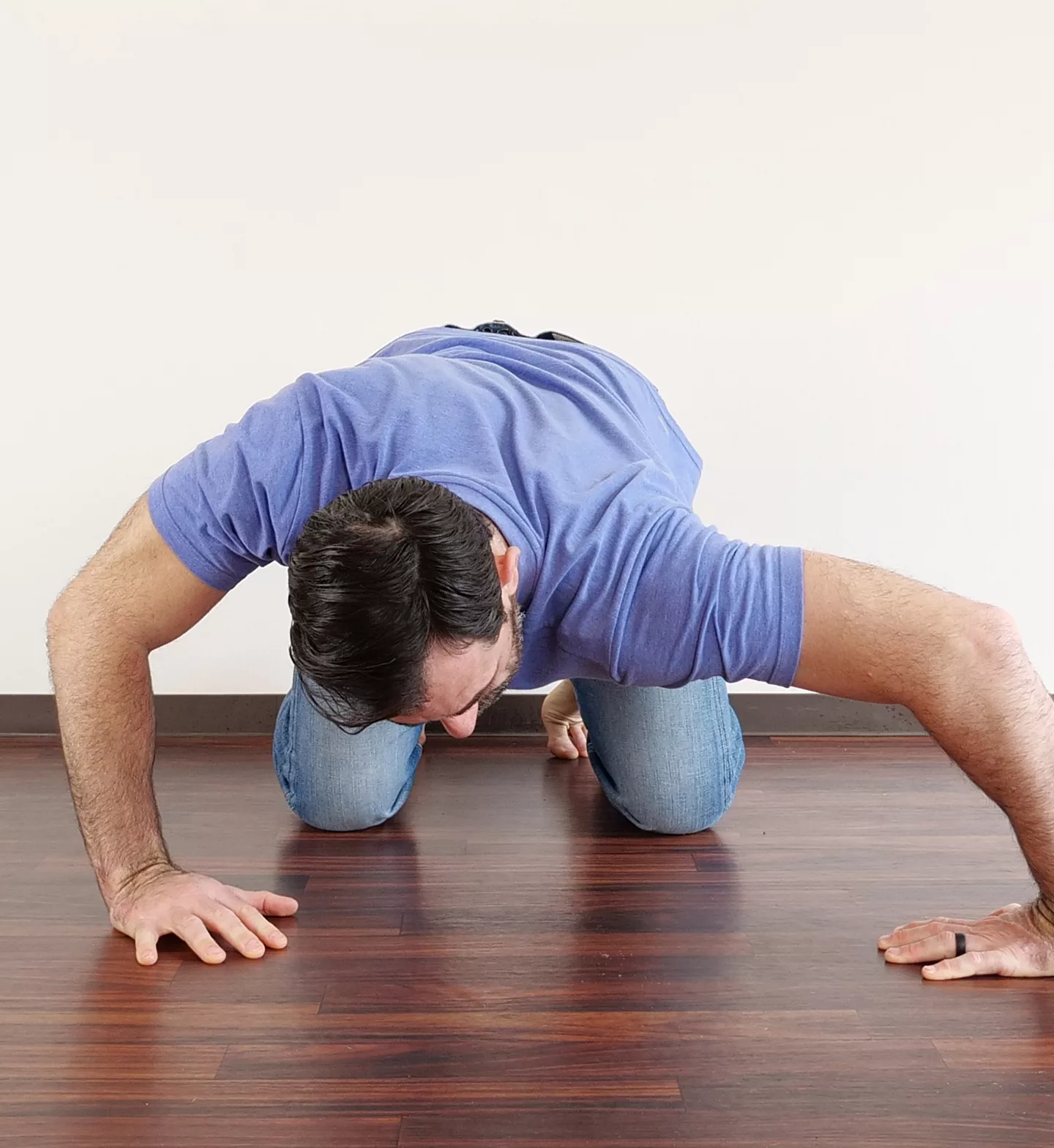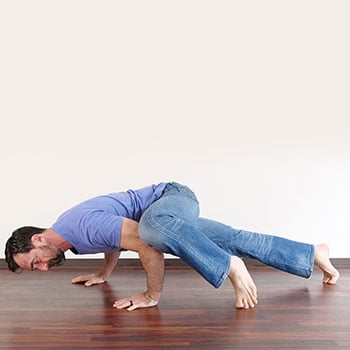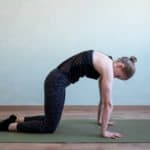We all know that stiff joints and tight muscles don’t feel great. They also get in the way of the stuff we actually want to do, whether that’s training hard, playing a sport, or just handling everyday life without feeling like you’re fighting yourself.
You’ll see two extremes on joint health:
- Some people say you should do a full body mobility routine every day, hitting every single joint.
- Others say you don’t need to bother at all, just keep exercising and you’ll be fine.
As always, the truth sits somewhere in the middle. You don’t need hours a day, but skipping mobility work entirely will catch up to you, especially as the years roll on by.
Before we go deeper, try this 5 minute follow-along and get visceral sense of what we’re talking about. And when you’ve got more time, there’s a longer routine later in the article. Both work; pick the one that fits your goals and your day.
Move Better in Five Minutes: Joint Mobility Check-In
Want to jump around? Here’s a quick guide to the sections below so you can go straight to what matters most for you.
Table of Contents
- Move Better In 5 Minutes
- Why Is Joint Mobility Important?
- How Much Joint Mobility Do You Need?
- What Factors Affect Joint Mobility?
- How to Improve Joint Mobility
- Extended Joint Mobility Routine
- Daily Diagnostic Joint Mobility Routine
- Making a Plan to Improve Your Joint Mobility
- How to Incorporate Joint Mobility into Training
Now, let’s break down what “joint mobility” really means, why it matters, and how you can use it to feel and move better.
In my 20-plus years as a physical therapist, I’ve assessed joint mobility in thousands of people. I’ll explain the fundamentals along with how to apply it so your body feels and performs better.
Why Is Joint Mobility Important?
Nearly every movement (and positioning) requires the coordinated control of nearly every joint in your body. For example, you may not feel like your elbows have much to do with how you sit in a chair, but your elbow positioning can affect how you use your shoulder, and that in turn can affect your neck. Everything is connected!
You don’t need to attain perfect ranges of motion or you’re messed up forever. But having a healthy range of motion (ROM) in your joints means your body is free to move and adjust in the least stressful way. Think of mobility work as an investment in your physical capabilities. You’re building more “margin for error”.
What is Joint Mobility?
Definition: The passive range of motion that occurs in the articulation between bones, measured as the total angular motion within each joint’s available degrees of freedom. For example: flexion, extension, and internal and external rotation.
But that definition is so obtuse! And it’s only helpful if you have the technical knowledge to understand its meaning.
In everyday life, joint mobility is simply how far a joint moves. When you go in to get your elbow looked at after a fall, clinicians will measure how far you can bend or straighten your elbow. This gives you a baseline of your restrictions and what you need to work on. Most of us don’t notice our elbow range of motion an injury makes it obvious, it’s only then we see how much of our movement we take for granted.

Athletic movements like jump require control and mobility in all the body’s major joints.
For a more common functional example, how far can you reach your hand up before your shoulder tightens up? When does your shoulder stop you when you try to scratch a spot in your back? Those motions are limited by your shoulder mobility.
As mentioned above, clinicians use ROM numbers to track progress, and normative ROMs come from average measurements across various age ranges in healthy people. Those become a handy goal for you to reach at the end of your rehab.
How Much Joint Mobility Do You Need?
Yet these normal ranges of motion are akin to the recommended dietary allowance (RDA) of nutrients, representing the minimum so you don’t develop diseases of deficiency. Similarly, normal ROMs approximate minimums for getting through our day; walking around, getting up and sitting down on chairs and getting dressed.
Hopefully you have those minimums down, and with this in mind it’s more useful to ask what do you need to keep moving freely and independent. Think crouching under the sink, reaching the top shelf, or moving through a crawlspace. If those are getting hard, pay attention. Which ones challenge you right now?
Think a bit right now, are there any other examples that you personally need to be functionally independent?
Simple, Real-Life Joint Mobility Diagnostic
You don’t need years of training to determine whether or not limited joint mobility is an issue for you. Just ask yourself some simple questions with this quick checklist:
-
- ☑ Which motions feel toughest; rotation, bending forward, or backward?
- ☑ Which body area is holding you back; hips, shoulders, spine?
- ☑ Are there movements where you feel tight or restricted?
Answering these questions gives us much more relatable and useful information than someone telling us that our knees only flex to 120 degrees, or that our shoulder internal rotation is just 55 degrees.
Also we all have different needs. Normal range of motion is good enough for quite a lot of us during our regular daily lives. But what if your chosen sport/favorite recreational activity requires your hip flexion to be what a doctor would consider supranormal?

You don’t need this much shoulder ROM for daily activities.
In tennis, a deeper lunge can be the difference between getting the ball and watching it pass. A bit more ROM than “normal” can boost both your performance and enjoyment.
Mobility vs. Stability
Instability in medical terms means structural damage that compromises movement. That’s very different from being naturally flexible or hypermobile.
Curious about hypermobility? Check out this article.
If stiffness is getting in the way of things you enjoy, it’s time to address it! Some form of joint mobility exercise is an essential part of fitness training. It should be included within and complement your other training for strength, flexibility, and body control.
What Factors Affect Joint Mobility?
It can help to break it down into two main factors:
| Anatomy | Nervous System |
|---|---|
| Joint shape and individual variation | Joint receptors reporting position |
| Pliability of capsule, ligaments, tendons | Stretch reflexes signaling lengthening |
| Pliability of muscle, fascia, nerves | |
This can quickly get into some pretty complicated stuff, but you don’t need a medical degree to keep your joints working well.
We’ll keep it simple. Some pieces are set, like bone shape or cartilage. Others change with training: muscle flexibility, your nervous system’s tolerance to stretch, and your control in and out of end ranges. These are are all factors that you can change significantly, all you have to do is put in the time!
How to Improve Joint Mobility: Don’t Try to Do Too Much
There’s no single routine that does everything for everyone. Your goals, personal body structure, and life context matter. Here’s a great framework to help find what’s best for you.
3 Ways To Use Joint Mobility Exercises
PreparationReady the body for activity. Quick check and loosen up.
|
Daily Check-InFast scan for tight spots. Adjust plan accordingly.
|
Focused ImprovementPlan practice for a specific limitation. Build lasting change.
|
Preparation: 16 Joint Mobility Warm-Up Exercise Routine

Put simply this is getting your body (and mind) ready for the activities ahead of you. Whether it’s a workout, a soccer match, or a dance show, preparing yourself for the activity is important for both improved performance as well as decreasing the chances of muscle pulls and strains.
It’s also a perfect time to do a type of physical “check in”. Does your shoulder feel a little wonky? Is it getting better with a few repetitions of shoulder circles? Great keep going!
But then you may discover your right knee just isn’t releasing its stiffness when you do your usual reps of lunges. You’ll do best to keep that at the front of your mind when you get into your activity. Ignoring that and going as hard as you can could lead to an injury and no one likes that setback.
When you’ve got a little more time, this longer routine is a great way to prepare for training or just check in with your body more thoroughly. It works your entire body in a smooth flow that leaves you loose and ready.
Extended Joint Mobility Warm-Up Routine Exercises:
- Backward Facing Wrist Flexor Stretch
- Forward Facing Wrist Flexor Stretch
- Backward Facing Wrist Extensor Stretch
- Closed Chain Elbow Rotations
- Quadruped Upper Spine Extension/Flexion
- Quadruped Shoulder Protraction/Retraction
- Quadruped Shoulder Circles
- Quadruped Spinal Circles
- Cat/Cow
- Frog Stretch
- Quadruped Sidebending
- Cobra
- Lunge Rotations
- Kneeling Hamstring Stretch
- Squat Rotations
- Three Point Bridge
Daily Diagnostic Joint Mobility Routine
A regular daily joint mobility exercise routine is a great example of what we like to call a “daily check-in” for your body.
This is best performed near the start of your day, so you can notice anything that feels different from the day before. The regularity of it lets you notice what areas consistently feel tight and what areas are usually pretty good. You’ll soon recognize patterns that may be related to stress levels, an impending illness, or just simply being run down.
The trick here is to not turn this routine into anything more than a quick check. It’s not meant to be a workout. It should be very quick and low intensity. No warm-up and no (or not much) sweating! Do it because it feels good and gives you useful information.
Here’s 4 exercises I recommend for a daily check-in, but you can feel free to pick your own.
Bonus: these feel pretty great!
Kneeling Lunge

What’s great about the kneeling lunge:
- Focus: Hip extension
Tall Kneeling Arm Raise to Side

What’s great about the tall kneeling arm raise:
- Focus: Shoulder elevation, back sidebending
Quadruped Spinal Circles

What’s great about quadruped spinal circles:
- Focus: Full back mobility
A-Frame

What’s great about the A-frame:
- Focus: Shoulder elevation, hamstring lengthening
Move in and out of a light stretch and keep it easy and enjoyable!
Making a Plan to Improve Your Joint Mobility

OK, so let’s say you’ve discovered that your hips are tight, and you want to include some hip mobility work as part of your regular routine.
Three sessions a week of about 30 minutes is a solid starting point.
3 Keys to Lasting Mobility
| Enough Stimulus
Your body only adapts when the challenge is strong enough to demand change. |
Consistent Practice
Lasting mobility comes from showing up over months, not days. |
Quality Technique
Moderate effort with precise form beats going harder with sloppy movement. |
Progress needs a sufficient stimulus, this is the classic exercise training prescription of gradually increasing your workload and intensity. The daily check-in is a nice a nice minimum to maintain, but really improving your condition requires building up what you can do over time.
Moderate efforts plus high quality technique is the best formula for improving joint mobility.
This takes into account the factors we talked about above (the ability to relax, nervous system stretch tolerance, specific muscle flexibility increases) which respond best to this style of training.
Characteristics of a Joint Mobility Improvement Plan
- Specific and targeted exercise for the body area and/or plane of motion.
- Sufficient time both in a particular exercise and the cumulative period of the training session. This is needed to effect a significant adaptive stimulus for change.
- Progression over time in either intensity, duration, or volume of the work. But think not in terms of 6 weeks but rather 6 months. Long-term mobility improvements require patience.
We can see now that there is a lot of nuance and consideration towards the incorporation of joint mobility work into your training routines. Much more than saying “just add these two exercises for 5 minutes at the end of your workout!”
Just as with many other things, beware of quick fixes. Great programs plan for patience and progression.
How to Incorporate Joint Mobility Exercise into a Training Program
We’ve never considered joint mobility exercise as “it’s own thing”, because it shouldn’t be either an afterthought or the main driver of a complete physical fitness program. Rather, it should always be incorporated into programs in the different ways outlined above. Whether in the preparation, assessment, or improvement categories.
All of our programs include specific joint preparation for each session, and some of them bake more joint mobility exercises into the main movements and exercises. As you’ve seen above, there should always be a context and a reasoning for the joint mobility exercises you choose to incorporate into your training.
What do you really want to get out of doing them? For what purpose and for what body areas?
If you have a routine you like that lacks joint mobility exercise, the joint routine videos above are a great starting point. If you’re looking for a more complete approach to full-body mobility that covers all your major joints and ROM for the most important movement patterns, you’ll want to check out our GMB Mobility program.
Build Flexibility That Actually Helps You Move
GMB Mobility is a guided program that improves your total body mobility. You’ll resolve restrictions so you can finally move and perform your best.





